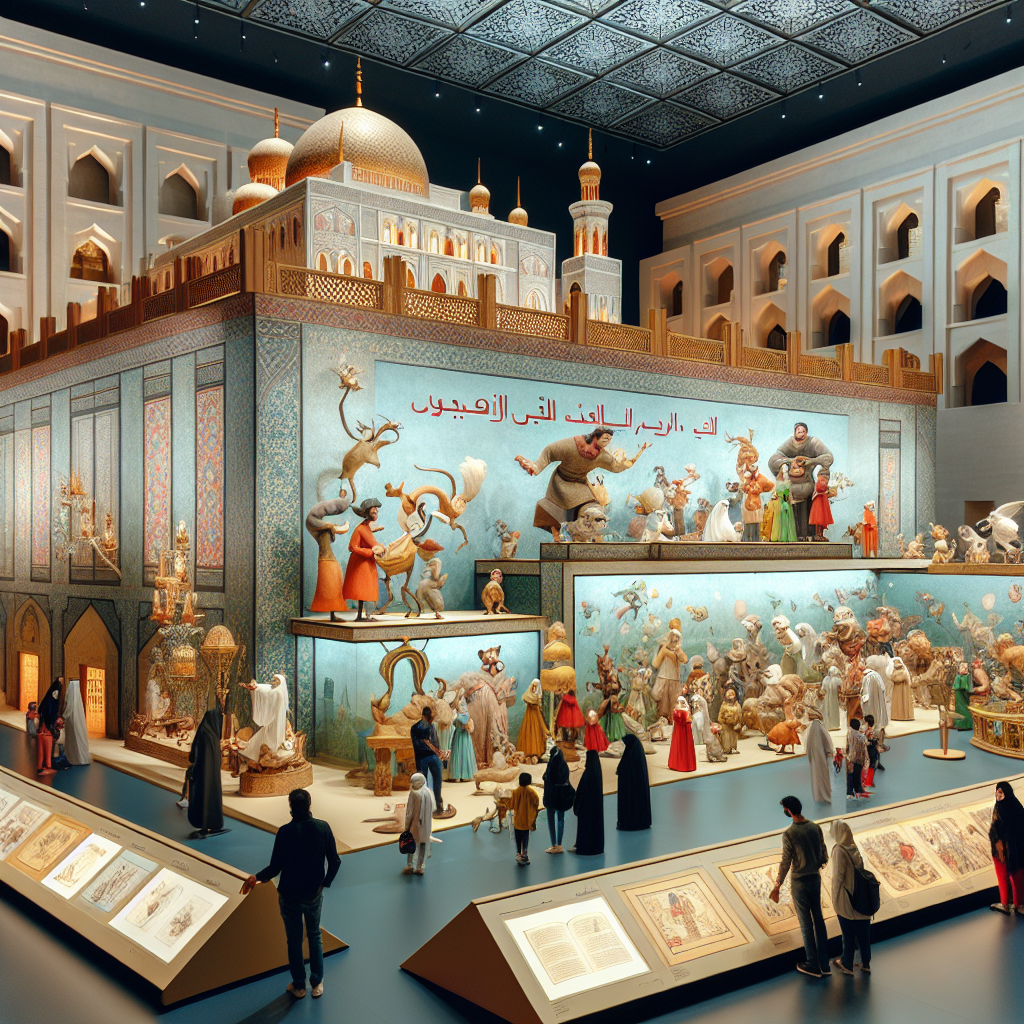Animal Tales Unveiled: From Panchtantra to La Fontaine at Louvre Abu Dhabi
The ongoing art exhibition at Louvre Abu Dhabi explores mystical animal tales from historical manuscripts, including 'Panchtantra.' Featuring over 130 artworks, it journeys through centuries of storytelling, highlighting themes of friendship, loyalty, and morality. The exhibition bridges Eastern and Western traditions, showcasing the timeless nature of fables.

- Country:
- India
An ongoing art exhibition at Louvre Abu Dhabi delves into the mystical world of animal tales embedded within historical manuscripts, including the ancient Indian collection ''Panchtantra''.
Showcasing over 130 artworks, ranging from centuries-old manuscripts to contemporary works, the exhibition, ''From Kalīla wa Dimna to La Fontaine: Travelling through Fables'', traces the origins of this genre in India and Greece.
It features an eclectic collection of rare manuscripts, paintings, and contemporary works - unveiling the timeless narratives of friendship, loyalty, cunning, and morality, as portrayed through anthropomorphic animal characters.
''At Louvre Abu Dhabi, we are not just presenting art; we are weaving narratives as a universal museum, leading by storytelling.
''Fables have transcended linguistic and cultural boundaries, inspiring new creations in both the East and the West, perfectly aligning with our mission—shedding light on the shared stories of humanity,'' Manuel Rabaté, director of Louvre Abu Dhabi, said in a statement.
Fables are a genre of literature that typically consists of short stories featuring animals or inanimate objects that possess human-like qualities.
The exhibition, divided into three sections - 'Travelling Tales', 'Telling Stories', and 'The Fables Today', takes visitors on a voyage of texts over time through their various adaptations and translations.
Several prominent pieces from France, Saudi Arabia, and the United Arab Emirates will be showcased throughout.
Some of the fables in the show are taken from the ''Panchatantra'' and are faithful to the original versions, such as ''The Tortoise and the Two Ducks'', a story that is illustrated in Indian and Indonesian low reliefs of the 7th and 8th centuries.
During the 8th century, the anthology, enriched with new fables, was translated into Arabic from Pahlavi by Ibn al-Muqaffa' and given the title Kalila wa Dimna.
The prose writer lay at the origin of the spread of the fables in both the East and West. His version was the basis for versified texts in Arabic, and for translations into Hebrew, Greek and Old Spanish.
Other notable highlights in the exhibition include one of the oldest illustrated manuscripts of 'Kalīla wa Dimna' by Ibn al-Muqaffa dating back to the Ayyubid dynasty (1171-1250 CE); ''The Two Adventurers and the Wondrous Writ'' by Jean-Baptiste Oudry, draughtsman Bonaventure Louis Prévost and ''Portrait of Jean de La Fontaine'' by Émile Bayard, draughtsman L. Wolff (engraver).
''The Eastern and Western traditions, rooted in a shared universal heritage, have evolved independently without direct contact, each charting its own course. It is only through the works of the eminent fabulist Jean de La Fontaine that these traditions have finally converged and united in a singular collection showcased at Louvre Abu Dhabi,'' said curator Annie Vernay-Nouri in a statement.
Besides the exhibition, visitors can also immerse themselves in the world of fables with insightful curatorial talks, along with a series of carefully curated film screenings that explore themes of morality, wisdom, and the power of storytelling.
The show will come to a close on July 21.
(This story has not been edited by Devdiscourse staff and is auto-generated from a syndicated feed.)
ALSO READ
India reaffirms close bonds of friendship with Bhutan during FS Misri's first visit abroad
Foreign Secretary Vikram Misri reaffirmes close bonds of friendship India shares with Bhutan during meeting with PM Tobgay.
Modern Medical Facility Inaugurated as a Symbol of Indo-Mauritian Friendship
Rekindling Old Friendships: A Cure for Loneliness?
Dawn to Dusk: A Silent Symphony - Ujjal Dey's Art Exhibition










